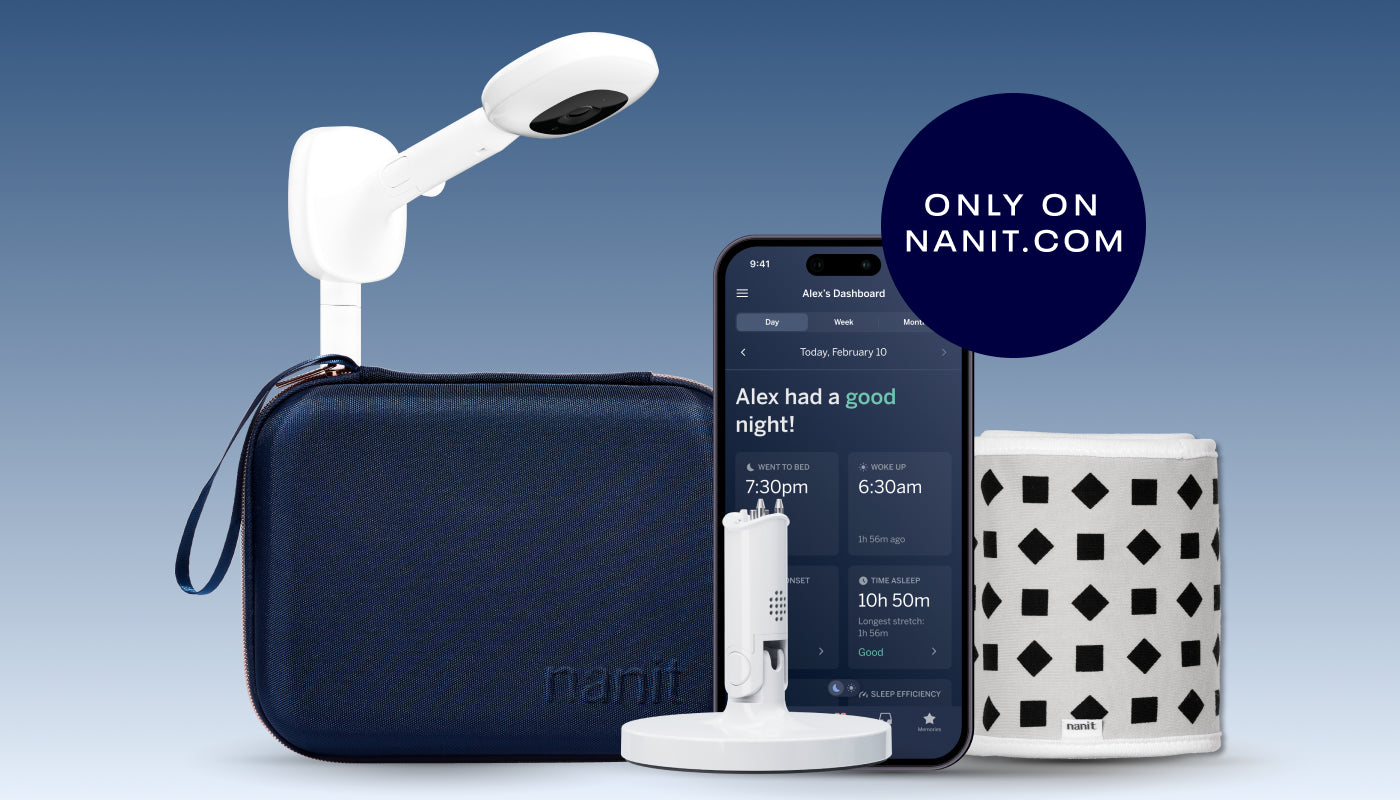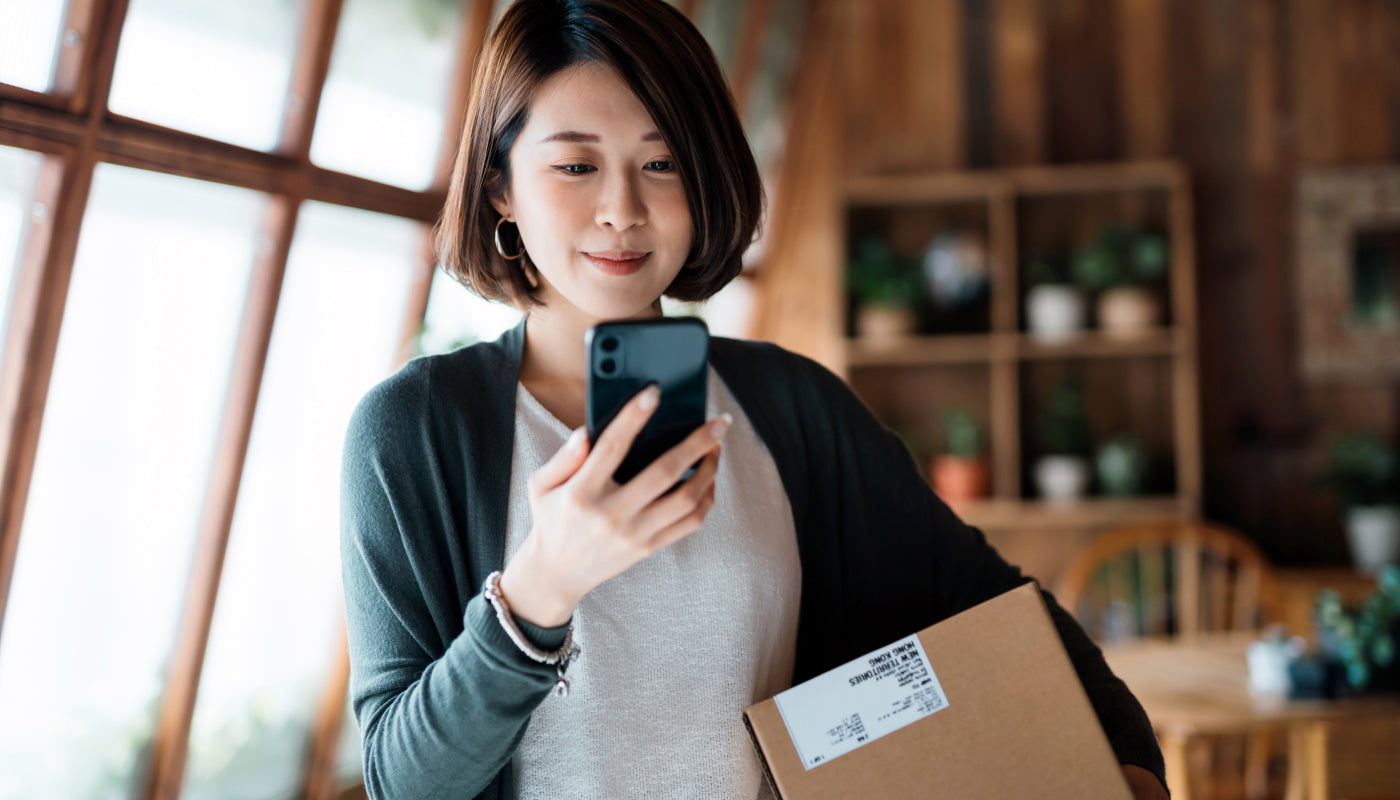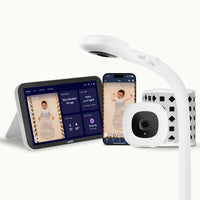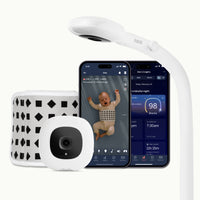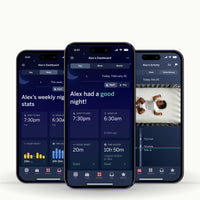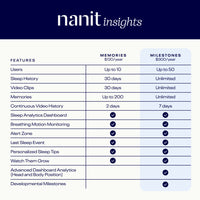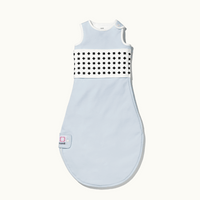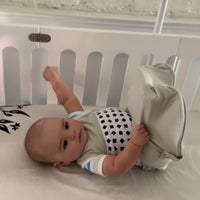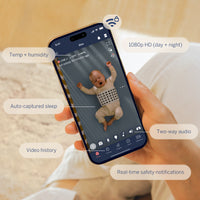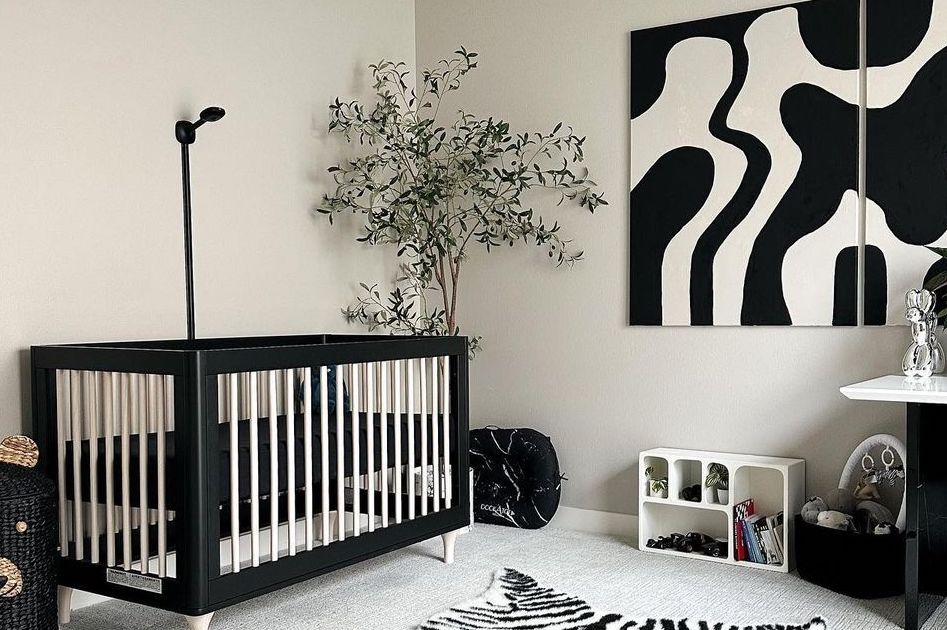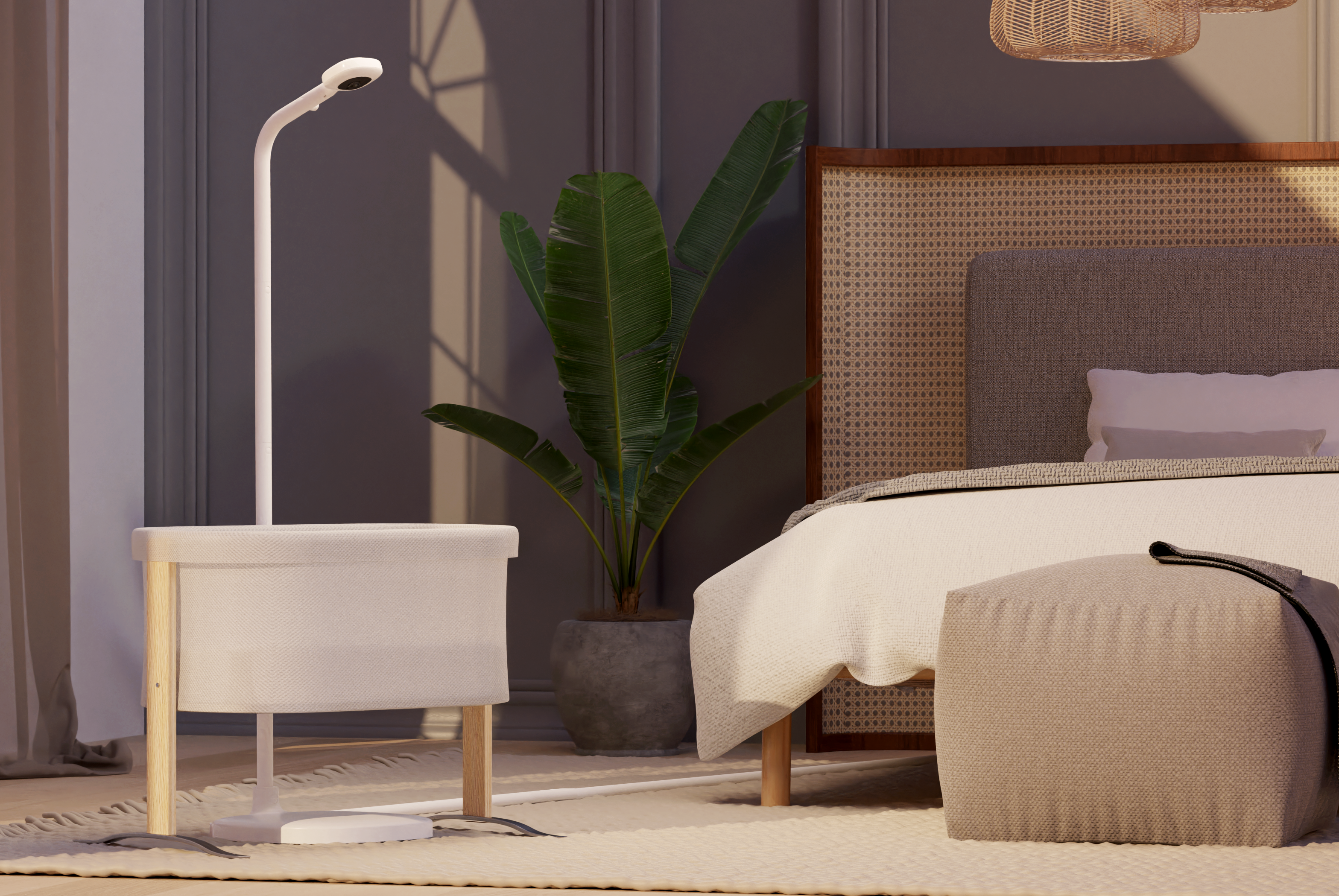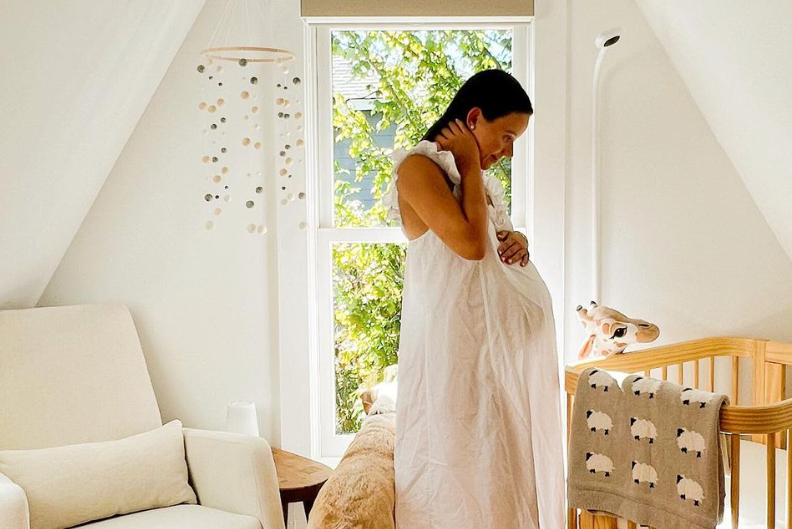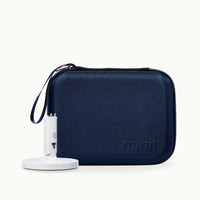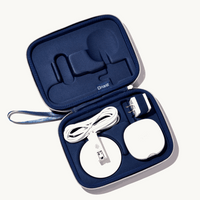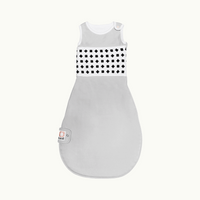Do you really need a baby monitor?
With parenthood comes a multitude of responsibilities. Fortunately, modern technology has created a tool to help keep parents and guardians at ease, no matter how far away they are from their little ones: baby monitors. While baby monitors are by no means a new technology, recent innovations have allowed these devices to provide parents with more information than ever before.
Do you need a baby monitor? What exactly can this investment provide (after all, they may be one of the more pricey items on your registry list)? If you’re unsure whether a baby monitor is right for your home, we can help guide you. Keep reading to learn more about these smart nursery marvels, from the various types of baby monitors available to their comprehensive benefits.
What does a baby monitor do?
A baby monitor tracks your child’s activities and shares them with you when you’re not in the same room. For instance, whether you’re in bed, at work, or on vacation, a smart baby monitor can let you know your child is safe in another room. Put simply, it’s a visual and audio-enhanced peek into your baby’s world when you’re not there—and that is a huge relief for many parents who may have separation anxiety of their own.
Depending on your exact device, a baby monitor can:
- Display a video of your baby’s activities and surroundings
- Monitor room conditions such as temperature and humidity
- Share and record audio of your baby
- Detect movement and send alerts if baby is awake
- Monitor breathing activity, heart rate, and temperature
- Send any measurements or activity to your smartphone or a smart device
Types of baby monitors
Not all baby monitors are created equal. Over time, the technology behind baby monitors has expanded and grown more complex. The good news? This means a baby monitor can keep tabs on your child more comprehensively than ever before.
So, before choosing a monitor for your baby’s room, get to know the different types of baby monitors available to you. With an understanding of the various features they offer, you can determine where to put the baby monitor and which type of monitor will best suit your needs:
- Audio monitor. A “classic” monitor model, an audio baby monitor transmits sound from your baby’s room to a receiver, similar to a walkie-talkie. Some audio-only baby monitors even allow two-way audio so that you can soothe your little one with the sound of your voice from afar.
- Video monitor. Through camera technology, video baby monitors display what your baby is doing inside their crib or nursery. Typically, these devices come with a security camera (which is placed in the baby’s room) and a monitor display (which is placed in your space). Some video monitors come with audio features, while others are visual-only. These days, you can also find video monitors that can be connected to a smart device through wifi, such as a smartphone, so that you can monitor your baby anywhere you have an internet connection.
- Movement monitor. Babies are curious and adventurous, to say the least. If you’re concerned about your baby’s nighttime or solo activities, then a movement monitor may be a good choice. These monitors detect either unnatural movement or a lack of movement, typically sending an alarm to parents in either situation.
- Sleep and breathing monitor. For newborns and infants, a monitor that measures sleep quality or breathing can be extremely useful. These monitors often use sensory or computer vision AI technology to monitor breathing and movement patterns, letting parents know just how well their baby snoozed during the night.
Why do I need a baby monitor?
Parenting is personal. Some parents are more hands-off, while others want to watch every breath their baby takes. Just as there’s no one way to parent, there’s no one solution to using a baby monitor. That said, there are many reasons why you should consider using a baby monitor, especially if you’re the parent of a newborn.
For many parents, childrearing can feel like an eternal balancing act between fostering independence and helicoptering. However, this concern is easily solved with a video baby monitor. Since these devices offer around-the-clock supervision, they can provide parents with the information and peace of mind they need while still allowing the child to learn how to sleep and play independently.
Baby monitors are also incredibly useful for watching children with special needs. For example, if your baby has a heart condition, the concept of leaving them alone to sleep may be terrifying. However, a video baby monitor can help put these worries to bed (literally).
In particular, health practitioners may recommend a baby monitor for children who have:
- A history of resuscitation or heart revival situations
- Cardiovascular issues
- Breathing disorders
- Sleep issues
Benefits of using a baby monitor
Even with the above considerations in mind, you may still wonder, what exactly can I expect when using a baby monitor, and what can I do with the information it gives me?
Of course, the benefits you can expect to receive from a baby monitor depend on the type of monitor you choose. However, in general, you can expect the right baby monitor to make your parenting more confident and less stressful. After all, these devices can keep an eye (or ear, or both!) on your baby when you might not be able to. To that end, you could experience the following benefits by using a baby monitor:
- Improved sleep. By monitoring your baby from a separate room, you can easily determine what any nighttime noises mean without having to race into another room. In the end, this may help teach your baby to fall asleep independently (and give you a little more snooze time yourself). Additionally, sleep-centric baby monitors can evaluate your baby’s sleep quality for any abnormalities. With this information, you can make choices that could help improve your baby’s sleep habits and quality.
- Increased peace of mind. It can be tough to let your child out of your sight, especially at a tender age. With a baby monitor, any fear of risky activities or accidents can be put to rest. Baby monitors with audio, video displays, thermometers, and other tools can let you know that your baby is safe and sound, even from afar. If something does go awry, the monitor can inform you instantly.
- Away-from-home guardianship. Going out for date night? Running those errands you’ve been putting off? Working from the office for the day? Even if you have a babysitter at home, baby monitors with smartphone connectivity can give you that up-close look at your baby from afar, providing additional assurance that they’re safe and being well taken care of.
- Parent-child bonding. Through a monitor, you can witness your baby's spontaneous expressions and actions, even when you're not physically there. With a two-way audio monitor, you can also let your baby know that your love is always present. Both of these capabilities work to foster a deeper connection with your little one.
What should you look for in a baby monitor?
There’s no single baby monitor for every home. However, there are certain factors that every parent should consider to ensure a quality baby monitor that’s reliable and safe. Keep the following in mind when shopping for your baby monitor:
- Video and audio quality. A baby monitor is only as good as its ability to give clear insights into your baby's world. When assessing audio and video quality, look for monitors that offer high-resolution video displays and crisp audio transmission. Additionally, you should consider devices with infrared technology (a.k.a. “night vision”) for enhanced baby monitoring.
- Battery life and power source. A reliable battery life is crucial for uninterrupted baby monitoring. Choose a baby monitor with a battery that can last through nap times and beyond. As a long-term alternative, you may even consider a monitor that connects to an outlet for a hassle-free power source.
- Smartphone compatibility. A monitor that can pair with your smartphone via Wifi will keep your baby within reach from any distance. This can be especially useful if you’re away from home for an extended period of time or if you regularly rely on a caregiver while you’re at work.
- Tracking capabilities. Want a full report on your baby's sleep quality? Consider monitors with breathing or movement trackers. These devices often have smartphone apps that compile daily data so that you can get an instant snapshot of your baby’s sleep and overall wellness.
- HSA/FSA eligibility. Are baby monitors FSA eligible? Health savings account or flexible spending account-eligible baby monitors can make high-quality health-tracking baby monitors more accessible and affordable. Fortunately, Nanit makes it easy to determine eligibility—the Nanit Pro Camera is HSA/FSA eligible. You can view our collection of what other Nanit products are HSA/FSA eligible: Nanit HSA/FSA Approved Products.
- Extra features. A baby monitor can please both you and your baby, especially if it has some newborn-friendly features like white noise, soothing night lights, and two-way audio.
Nanit: The most awarded baby monitor
So, are baby monitors necessary? While you may choose not to use one, baby monitors are undoubtedly valuable tools that can help support your child’s safety, provide peace of mind, and foster a deep connection between you and your little one—even at a distance.
To experience all that baby monitors have to offer with a high-quality, comprehensive device of your own, check out the Nanit Pro Camera. With crystal-clear video quality, two-way audio, sound and motion alerts, sleep scores, soothing white noise, smartphone compatibility, and more, you and your baby can both feel at ease no matter where you are. Experience the Nanit difference for yourself by exploring our baby monitor today.
Need help finding the right Nanit Baby Monitor set up? Take our 1-minute quiz and get matched with our recommendation based on your family's needs: Find the Right Baby Monitor
Key takeaways
- Baby monitors provide benefits such as improved sleep for both parents and babies, increased peace of mind, away-from-home guardianship, and parent-child bonding.
- When looking for a baby monitor, consider factors like video and audio quality, battery life, smartphone compatibility, tracking capabilities, HSA/FSA eligibility, and extra features.
- The Nanit Pro Camera is highlighted as a comprehensive and highly awarded baby monitor that offers features like clear video quality, two-way audio, sleep scores, and smartphone compatibility to provide peace of mind and enhance the parent-child connection.
Sources:
HealthDirect Australia. Baby monitors and sensors. https://www.pregnancybirthbaby.org.au/baby-monitors-and-sensors
Mother and Baby. Do you need a baby monitor? https://www.motherandbaby.com/baby/safety/do-you-need-a-baby-monitor/
Verywell Family. The Pros and Cons of Baby Monitors. https://www.verywellfamily.com/the-pros-and-cons-of-baby-monitors-5218527
